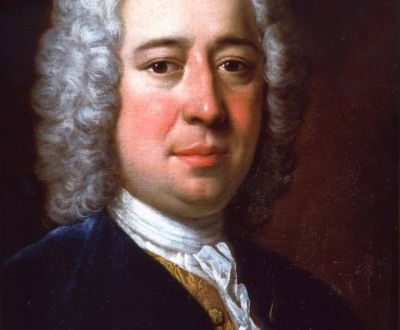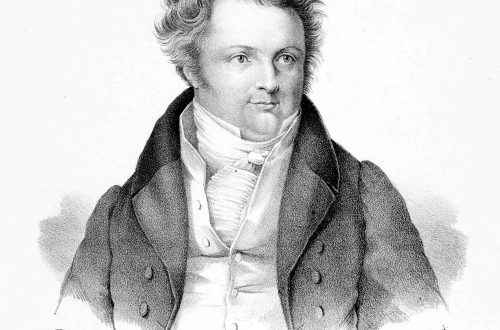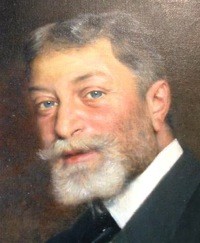
Andrey Melytonovich Balanchivadze (Andrey Balanchivadze) |
Andrey Balanchivadze
The work of A. Balanchivadze, an outstanding composer of Georgia, has become a bright page in the development of national musical culture. With his name, much about Georgian professional music appeared for the first time. This applies to such genres as ballet, piano concerto, “in his work, Georgian symphonic thinking for the first time appeared in such a perfect form, with such classical simplicity” (O. Taktakishvili). A. Balanchivadze brought up a whole galaxy of composers of the republic, among his students R. Lagidze, O. Tevdoradze, A. Shaverzashvili, Sh. Milorava, A. Chimakadze, B. Kvernadze, M. Davitashvili, N. Mamisashvili and others.
Balanchivadze was born in St. Petersburg. “My father, Meliton Antonovich Balanchivadze, was a professional musician… I started composing at the age of eight. However, he really, seriously took up music in 1918, after moving to Georgia. In 1918, Balanchivadze entered the Kutaisi Musical College, which was founded by his father. In 1921-26. studies at the Tiflis Conservatory in the class of composition with N. Cherepnin, S. Barkhudaryan, M. Ippolitov-Ivanov, tries his hand at writing small instrumental pieces. In the same years, Balanchivadze worked as a musical designer for the performances of the Proletcult Theater of Georgia, the Satire Theater, the Tbilisi Workers’ Theater, etc.
In 1927, as part of a group of musicians, Balanchivadze was sent by the People’s Commissariat of Education of Georgia to study at the Leningrad Conservatory, where he studied until 1931. Here A. Zhitomirsky, V. Shcherbachev, M. Yudina became his teachers. After graduating from the Leningrad Conservatory, Balanchivadze returned to Tbilisi, where he received an invitation from Kote Marjanishvili to work in the theater he directed. During this period, Balanchivadze also wrote music for the first Georgian sound films.
Balanchivadze entered Soviet art at the turn of the 20s and 30s. together with a whole galaxy of Georgian composers, among whom were Gr. Kiladze, Sh. Mshvelidze, I. Tuskia, Sh. Azmaiparashvili. It was a new generation of national composers who picked up and continued in their own way the achievements of the oldest composers – the founders of national professional music: Z. Paliashvili, V. Dolidze, M. Balanchivadze, D. Arakishvili. Unlike their predecessors, who worked mainly in the field of opera, choral and chamber-vocal music, the younger generation of Georgian composers turned mainly to instrumental music, and Georgian music developed in this direction in the next two to three decades.
In 1936, Balanchivadze wrote his first significant work – the First Piano Concerto, which became the first example of this genre in the national musical art. The bright thematic material of the concert is connected with national folklore: it embodies the intonations of severely epic marching songs, graceful dance melodies, and lyrical songs. In this composition, many features that are characteristic of Balanchivadze’s style in the future are already felt: the variational method of development, the close connection of heroic themes with genre-specific folk melodies, the virtuosity of the piano part, reminiscent of the pianism of F. Liszt. The heroic pathos inherent in this work, the composer will embody in a new way in the Second Piano Concerto (1946).
A significant event in the musical life of the republic was the lyric-heroic ballet “The Heart of the Mountains” (1st edition 1936, 2nd edition 1938). The plot is based on the love of the young hunter Dzhardzhi for the daughter of Prince Manizhe and the events of the peasant struggle against feudal oppression in the 1959th century. Lyrical-romantic love scenes, full of extraordinary charm and poetry, are combined here with folk, genre-domestic episodes. The element of folk dance, combined with classical choreography, became the basis of the dramaturgy and musical language of the ballet. Balanchivadze uses round dance perkhuli, energetic sachidao (a dance performed during the national struggle), militant mtiuluri, cheerful tseruli, heroic horumi, etc. Shostakovich highly appreciated the ballet: “… there is nothing small in this music, everything is very deep … noble and sublime, a lot of serious pathos coming from serious poetry. The composer’s last pre-war work was the lyric-comic opera Mziya, which was staged in XNUMX. It is based on a plot from the everyday life of a socialist village in Georgia.
In 1944, Balanchivadze wrote his first and first symphony in Georgian music, dedicated to contemporary events. “I wrote my first symphony during the terrible years of the war… In 1943, during the bombing, my sister died. I wanted to reflect a lot of experiences in this symphony: not only sadness and grief for the dead, but also faith in victory, courage, heroism of our people.
In the post-war years, together with choreographer L. Lavrovsky, the composer worked on the ballet Ruby Stars, most of which later became an integral part of the ballet Pages of Life (1961).
An important milestone in the work of Balanchivadze was the Third Concerto for Piano and String Orchestra (1952), dedicated to youth. The composition is programmatic in nature, it is saturated with march-song intonations characteristic of pioneer music. “In the Third Concerto for Piano and String Orchestra, Balanchivadze is a naive, cheerful, perky child,” writes N. Mamisashvili. This concerto was included in the repertoire of famous Soviet pianists – L. Oborin, A. Ioheles. The Fourth Piano Concerto (1968) consists of 6 parts, in which the composer seeks to capture the characteristic features of various regions of Georgia – their nature, culture, life: 1 hour – “Jvari” (the famous temple of the 2th century in Kartli), 3 hours – “Tetnuld” (mountain peak in Svaneti), 4 hours – “Salamuri” (national type of flute), 5 hours – “Dila” (Morning, intonations of Gurian choral songs are used here), 6 hours – “Rion Forest” ( draws the picturesque nature of Imeretin), 2 hours – “Tskhratskaro” (Nine sources). In the original version, the cycle contained XNUMX more episodes – “Vine” and “Chanchkeri” (“Waterfall”).
The fourth piano concerto was preceded by the ballet Mtsyri (1964, based on a poem by M. Lermontov). In this ballet-poem, which has a truly symphonic breath, all the attention of the composer is concentrated on the image of the protagonist, which gives the composition the features of a monodrama. It is with the image of Mtsyra that 3 leitmotifs are associated, which are the basis of the musical dramaturgy of the composition. “The idea to write a ballet based on Lermontov’s plot was born by Balanchivadze a long time ago,” writes A. Shaverzashvili. “Earlier, he settled on Demon. However, this plan remained unfulfilled. Finally, the choice fell on “Mtsyri” … “
“Balanchivadze’s searches were facilitated by the arrival in the Soviet Union of his brother George Balanchine, whose enormous, innovative choreographic art opened up new possibilities in the development of ballet … Balanchine’s ideas turned out to be close to the creative nature of the composer, his searches. This determined the fate of his new ballet.”
70-80s marked by the special creative activity of Balanchivadze. He created the Third (1978), Fourth (“Forest”, 1980) and Fifth (“Youth”, 1989) symphonies; vocal-symphonic poem “Obelisks” (1985); opera-ballet “Ganga” (1986); Piano Trio, Fifth Concerto (both 1979) and Quintet (1980); Quartet (1983) and other instrumental compositions.
“Andrey Balanchivadze is one of those creators who left an indelible mark on the development of national musical culture. …In the course of time, new horizons open before each artist, many things in life change. But the feeling of great gratitude, sincere respect for Andrei Melitonovich Balanchivadze, a principled citizen and great creator, remains with us forever” (O. Taktakishvili).
N. Aleksenko





